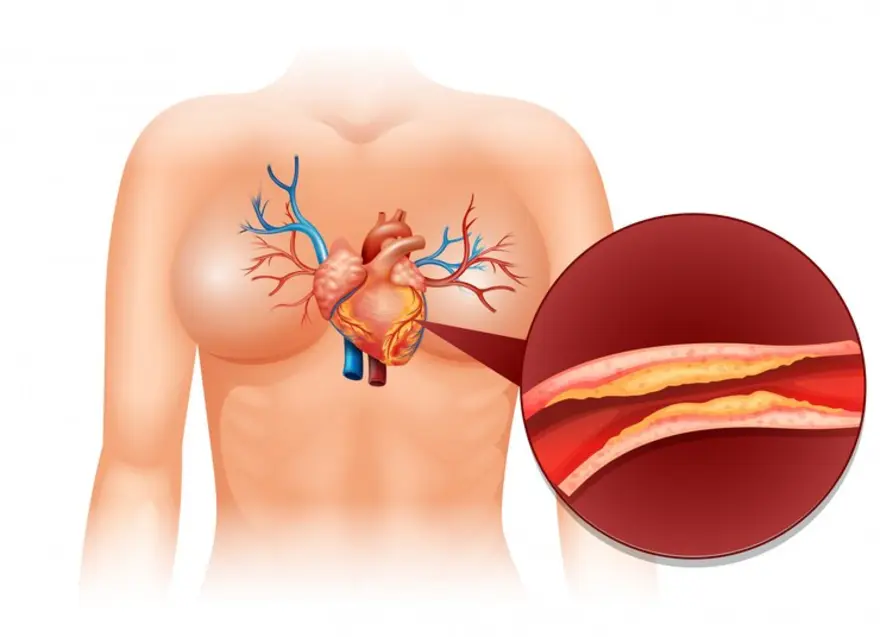Disease
Pancreatic Cancer: Symptoms, Diagnosis and Treatment
3581 Views
0

The pancreas is an organ located at the back of the abdomen, behind the stomach. The pancreas consists of glands that produce enzymes such as insulin and glucagon. Insulin and glucagon help control blood sugar levels. It also produces enzymes that aid in digestion.
The pancreas consists of exocrine pancreas and endocrine pancreas . The exocrine cells (acinar and duct tissue) make digestive juices, and the endocrine cells secrete the hormones, commonly called islets of Langerhans.
Pancreatic cancer occurs when’ DNA mutation of the pancreatic cells leads to continuous cell division. Hence, these cells grow uncontrollably, resulting in a mass of cells. Sometimes, the growth can be non-cancerous or benign. However, the growth is cancerous in some cases and can spread to nearby organs and blood vessels. About 95% of pancreatic cancers begin in exocrine cells. Around 5-7% are tumours of the islet of Langerhans.
What are The Symptoms of Pancreatic Cancer
Pancreatic cancer is difficult to diagnose as symptoms are often seen during later stages. Some of the later stage symptoms include:
- Nausea and vomiting
- Unexplained weight loss
- Yellowing of the skin and whites of the eyes (jaundice)
- Loss of appetite
- Blood clots and fatigue
- Lower abdominal pain that spreads to the back
- Light coloured stools
- Darker coloured urine
Over time, complications such as weight loss, jaundice, pain and bowel obstruction may increase. As cancer grows and consumes the body's energy, the growing tumour may press on the stomach, block the liver's bile duct, leading to jaundice, and press on the nerves in the abdomen, causing severe pain. The pancreas also does not make enough digestive juices, causing weight loss and inability to digest.
Diagnosis of Pancreatic Cancer
As doctors cannot analyse the pancreas during routine physical examinations, some of the tests to diagnose pancreatic cancer include:
- Examination of medical history: The patient's past illnesses and health history are examined.
- Imaging tests: A computerised tomography (CT scan), MRI scan, or a Positron emission tomography (PET) scan is done to find malignant tumour cells in the body.
- Ultrasound: An abdominal ultrasound is done to visualise the pancreas. Endoscopic ultrasound can also be done where the endoscope (a thin tube with a camera at the tip) is used to image the structure. A tissue sample is also obtained from the pancreas using an ultrasound-guided biopsy.
- Tumour marker test: Performing a CA-19-9 blood test or a carcinoembryonic blood test helps diagnose the cancer. Higher levels usually indicate a tumour, as the protein is released by pancreatic cancer cells.
Causes of Pancreatic Cancer
There is no definitive cause of pancreatic cancer. Research and several studies have identified certain risk factors that may cause pancreatic cancer, such as:
- Hereditary factors like mutations in the BRCA genes and hereditary chronic pancreatitis due to hereditary mutations
- Obesity
- Smoking cigarettes or other forms of tobacco.
- Having type 1 or type 2 diabetes, or the sudden development of diabetes in someone with normal body mass index
- Being exposed to chemicals such as pesticides, cleaning agents, metals
Pancreatic Cancer Stages: Diagnosis of Pancreatic Cancer
Pancreatic cancer is generally classified into five stages based on the tumour’s size and location. The spread of the cancer is also taken into consideration.
While it is not detected early, pancreatic cancer causes the tumour to spread to nearby lymph nodes, the liver, the lining of the abdominal cavity and the lungs. The stages of pancreatic cancer include:
Stage 0
This stage is characterised by abnormal cells in the lining of the pancreas. These cells have the potential to be cancerous or benign.
Stage 1
The tumour is present in the pancreas.
Stage 2
The tumour in the pancreas has spread to the nearby tissues and organs.
Stage 3
The cancer has spread to the blood vessels near the pancreas and the lymph nodes. This is the start of its metastatic property, as the cancer starts spreading throughout the body.
Stage 4
In this final stage, the cancer has spread to distant areas of the body such as the lungs, abdominal cavity and liver.
The prognosis stage can help the medical adviser provide proper treatment depending on the cancer stage. Stage four pancreatic cancer survival rate is about one or two years post-diagnosis.
Treatment of Pancreatic Cancer
The treatment of pancreatic cancer is based on the progression of cancer, location of the tumour and age, and other health parameters of the patient. Some of the treatment options include,
- Radiation/chemotherapy: This method targets and kills the cancer cells using high-speed energy radiation.
- Immunotherapy: This treatment helps the body's immunity fight cancer.
- Surgical removal of the tumour: The cancerous part of the pancreas, called pancreatectomy, is surgically removed under this method. The surgical removal and the procedure are decided based on the tumour’s location.
Final Note: Management of Pancreatic Cancer Symptoms
Making decisions during and post-treatment should be a discussion involving the patient's requirements and the doctor's. Pain medication is the first line of managing side effects. If they do not work, the doctor can perform a procedure known as celiac plexus neurolysis (CPN) using endoscopic ultrasound to inject medicine or cut the nerves to block the feeling of pain.
Patients with pancreatic cancer who have undergone surgery may have special nutritional needs as the ability to make pancreatic enzymes is affected. The medical practitioner may prescribe medicines to prevent malnutrition.
Follow-up tests are also required to see how the treatment is working. The medical practitioner decides to continue, change or stop the treatment based on the progression or the results of the tests.
Several emotional support groups and nurse practitioners can help in the management and recovery process. Refraining from alcohol, smoking tobacco and maintaining a normal, healthy weight by eating healthy and exercising are some methods that help reduce the risk of getting pancreatic cancer.
 Home Visit
Home Visit Upload
Upload














1701259759.webp)









 WhatsApp
WhatsApp